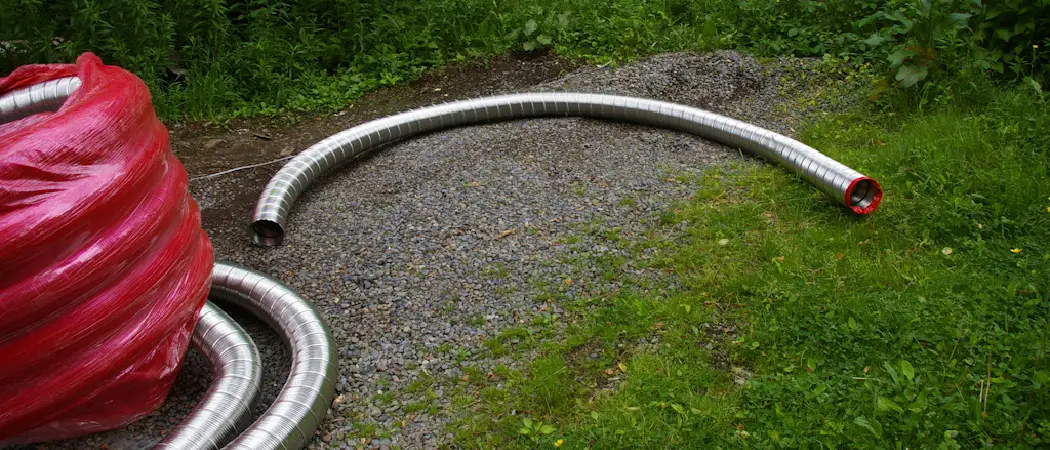Do you have unsightly drain pipes running through your yard? Are they detracting from the beauty of your outdoor space and ruining the aesthetic of an otherwise well-manicured lawn? We’ve all had that embarrassing moment where we’ve tripped over an exposed pipe in the yard, or perhaps you’ve spent time meticulously tending to your garden only to have the unsightly presence of drain pipes disrupt the serene landscape. Don’t worry, there is hope!
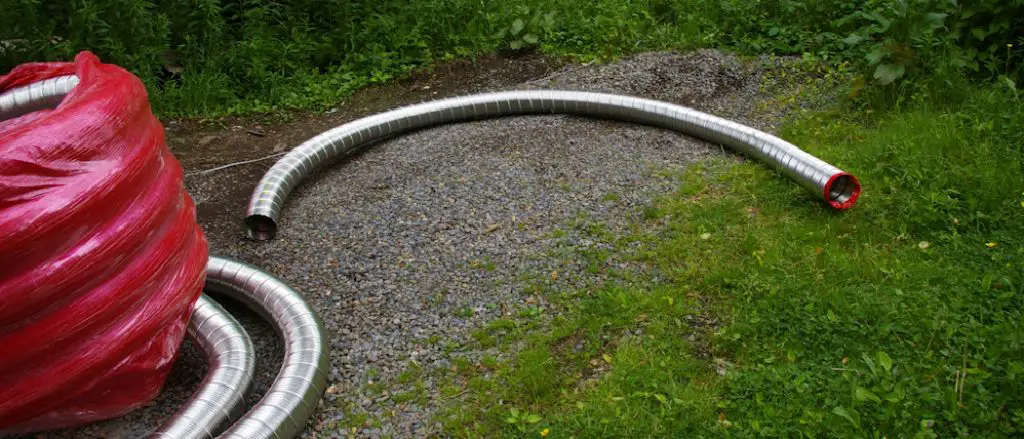
There are several options available to help you conceal those pesky drain pipes in your yard so that you can reclaim the picturesque landscaping you crave. This blog post aims to tackle this exact issue, presenting various creative and effective ways how to hide drain pipes in your yard, enhancing your outdoor space’s beauty while maintaining the functionality of your drainage system.
Assessing Your Drainage System
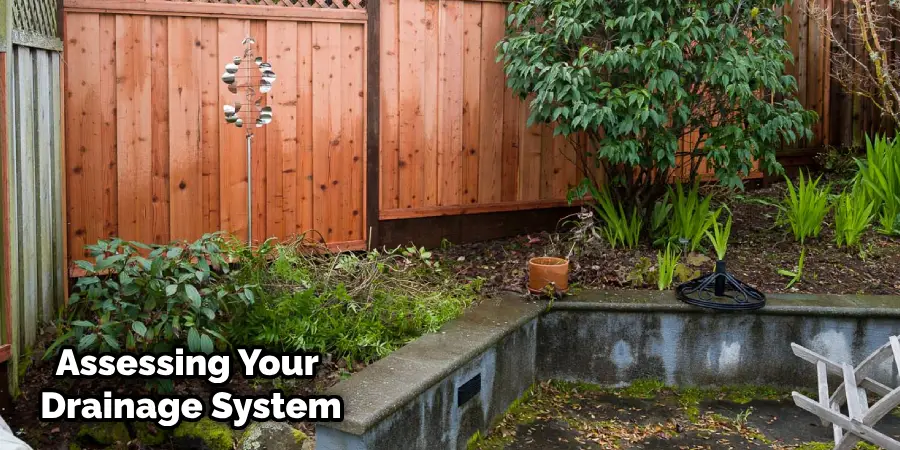
Before you dive into concealing your drain pipes, it’s essential to understand the types of drain pipes commonly used in yards and evaluate their placement.
A. Understanding the Types of Drain Pipes Commonly Used in Yards
- Surface Drains: These are installed just beneath the surface of your yard to collect water and divert it away from the property. They’re typically used in areas that accumulate standing water after heavy rainfall.
- French Drains: These are slightly more complex, consisting of a perforated pipe buried in a trench filled with gravel. French drains collect water from the soil and divert it away to prevent waterlogging.
- Downspout Extensions: These are extensions attached to the downspouts of your gutter system. They carry rainwater further away from your home’s foundation to prevent damage.
B. Evaluating the Layout and Placement of Existing Drain Pipes
Take some time to evaluate the layout and placement of your existing drain pipes. This step is crucial in determining the best way to conceal them without disrupting their functionality.
C. Identifying Key Considerations Before Concealing Drain Pipes
- Accessibility for Maintenance: Whatever method you choose to conceal your drain pipes, ensure it doesn’t hinder your access for regular maintenance and cleaning.
- Local Building Codes and Regulations: Always check your local building codes and regulations before making alterations to your drainage system. Some jurisdictions may have strict rules on how drain pipes can be modified or hidden.
How to Hide Drain Pipes in Yard: 8 Creative and Practical Solutions
1. Using Decorative Covers or Grates
One of the simplest and most affordable ways to hide your drain pipes is by using decorative covers or grates. These are available in various shapes, colors, and designs that can blend seamlessly with your outdoor space.
2. Camouflaging with Landscaping
Another easy way to conceal your drain pipes is by incorporating them into your landscaping. You can use plants, rocks, or mulch to cover the pipes and create a natural-looking barrier.
3. Building an Enclosure
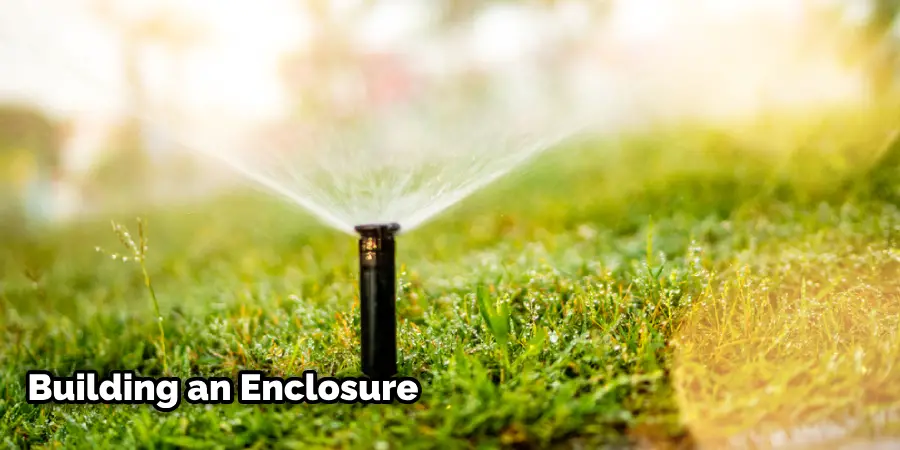
If you have a larger drain pipe that cannot be easily hidden with covers or landscaping, consider building an enclosure around it. You can use materials like wood, lattice panels, or stone to create an attractive structure that disguises the pipes.
4. Painting or Wrapping with Vinyl
For a budget-friendly option, consider painting your drain pipes to match the color of your house or landscaping. Another alternative is using vinyl wraps specifically designed for outdoor use. These wraps come in various patterns and colors and can be easily applied to your drain pipes.
5. Installing an Artificial Rock Cover
If you want a more natural and permanent solution, consider installing an artificial rock cover over your drain pipes. These covers are designed to look like real rocks and can be easily installed without any special tools or skills.
6. Concealing with Planters
Another creative way to hide your drain pipes is by using planters as a disguise. You can choose from a variety of shapes, sizes, and styles to match your outdoor decor. Simply place the planters over your drain pipes and fill them with your favorite plants or flowers.
7. Burying Pipes Underneath Ground Cover
Burying underground drain pipes underneath ground cover like grass or mulch can be an effective way to conceal them. Just make sure to leave access points for maintenance and cleaning.
8. Constructing a “Green Roof”
If you have a flat or low-sloping roof, consider constructing a “green roof” over your drain pipes. This involves adding a layer of soil and planting grass or other vegetation on top of the existing roof surface, effectively hiding the pipes from view.
Eco-Friendly Options for Concealing Drain Pipes
1. Use Native Plants
When incorporating plants to conceal your drain pipes, consider using native species that are better suited to the local environment and require less water and maintenance.
2. Implement Rain Gardens
Rain gardens, also known as bioretention areas, can be an eco-friendly way to manage excess water while also concealing your drain pipes. These gardens use special soil and plants to absorb and filter rainwater, reducing runoff.
3. Install a Rain Barrel
Another way to manage excess water while also concealing your drain pipes is by installing a rain barrel. These barrels collect rainwater from your roof and can be used for watering plants or washing outdoor surfaces.
4. Use Recycled Materials
When building enclosures or covers for your drain pipes, consider using recycled materials like reclaimed wood or plastic to reduce waste and minimize the environmental impact.
5. Avoid Harmful Chemicals
When maintaining your yard, avoid using harmful chemicals that can potentially seep into your drainage system and harm the environment. Instead, opt for natural and eco-friendly alternatives.
As you can see, there are various creative and practical solutions for concealing drain pipes in your yard. Just make sure to consider important factors like safety, long-term maintenance, and environmental impact before making any changes.
Winterizing Concealed Drain Pipes
Proper winterization is crucial to protect your concealed drain pipes from freezing and harsh weather conditions. Here are some tips to help you prepare your pipes for the cold months:
1. Insulate the Pipes
Wrapping the pipes in insulation can help prevent the water inside from freezing. There are various types of pipe insulation available on the market, including foam tubing and insulating tape. Choose the type that is most suitable for your specific needs and environment.
2. Use Heat Tape
Heat tape or heat cables can provide additional protection against freezing. They are designed to be wrapped around the pipe, providing a constant source of heat to prevent the water inside from freezing. However, they must be used with care to avoid overheating and potential fire hazards.
3. Keep Water Flowing
Even a slight trickle of water running through the pipes can help prevent freezing. The movement of water makes it more difficult for ice to form. Therefore, during extremely cold weather, consider letting a small amount of water flow through the pipes.
4. Seal Off Outdoor Vents
Vents can allow cold air to reach your pipes. By sealing off these vents during the winter months, you can help protect your pipes from freezing temperatures.
5. Regularly Inspect for Leaks
Even a small leak can allow cold air to enter and freeze your pipes. Regularly inspect your pipes for leaks, and if you find any, fix them immediately.
Remember, preparation is key when it comes to protecting your drain pipes in winter. Starting early and taking the necessary preventative measures can save you from costly repairs and unnecessary headaches.
Things Need to consider when concealing drain pipes
1. Safety Concerns
Before concealing your drain pipes, make sure you’re not covering any important utility lines or creating a safety hazard. This is particularly important if you plan on burying the pipes or building an enclosure around them.
2. Potential Impact on Drainage System
Concealing your drain pipes may have unintended consequences on your drainage system, so it’s essential to carefully plan and evaluate the potential impact before making any changes.
3. Maintenance Needs
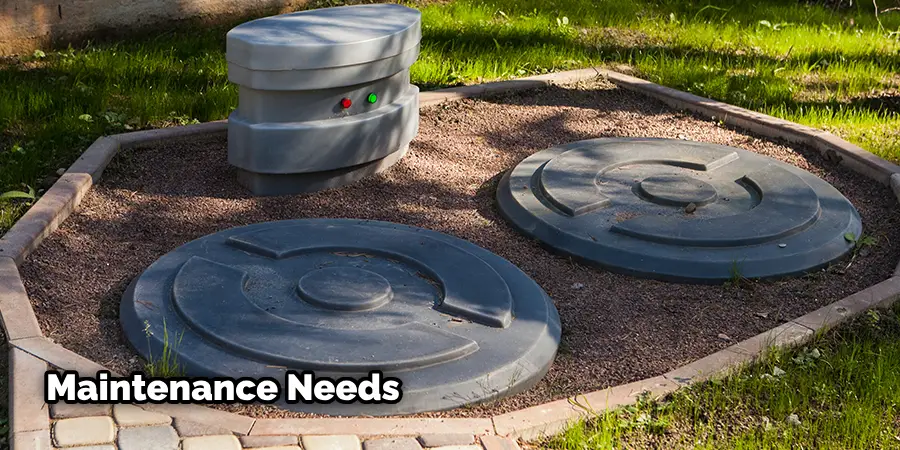
Some methods of concealing drain pipes may require regular maintenance, such as cleaning or trimming plants used for camouflage. Consider the long-term maintenance needs when choosing a solution.
4. Longevity
Depending on the materials used, some concealment methods may not be as durable as others. Consider the lifespan of your chosen solution and whether it will need to be replaced or maintained over time.
5. Aesthetics
Lastly, think about how the concealed drain pipes will impact the overall aesthetics of your yard. Choose a solution that not only hides the pipes but also adds to the visual appeal of your outdoor space.
How to Avoid Common Mistakes while Concealing Drain Pipes
1. Failing to Consider Accessibility
As mentioned earlier, accessibility for maintenance is crucial when concealing drain pipes. Make sure your chosen solution allows for easy access to the pipes when needed.
2. Forgetting About Building Codes and Regulations
Always check with your local authorities before making any changes to your drainage system. Violating building codes and regulations can result in costly fines and potential safety hazards.
3. Not Considering the Functionality of Drain Pipes
It’s essential to keep in mind the functionality of your drain pipes when concealing them. Make sure your chosen solution doesn’t impede their ability to redirect water away from your home’s foundation effectively.
4. Neglecting Long-Term Maintenance Needs
Some concealment methods may require regular maintenance, which can be easily overlooked. Consider the long-term maintenance needs of your chosen solution to avoid any future issues.
5. Sacrificing Aesthetics
While functionality is important, don’t sacrifice aesthetics when choosing a concealment method for your drain pipes. With so many creative and practical solutions available, you can find one that both hides the pipes and enhances the beauty of your yard.
6. Not Consulting a Professional
If you need help with the best way to conceal your drain pipes, it’s always best to consult a professional plumber or landscaper. They can provide expert advice and help you avoid any costly mistakes.
Maintenance Tips for Concealed Drain Pipes
Maintaining the condition of your concealed drain pipes is as important as the aesthetic considerations of concealing them. Here are a few tips to help you ensure their longevity and functionality:
1. Regular Inspection and Cleaning Procedures
To maintain the effectiveness of your drainage system, conduct regular inspections and cleaning. Check for any signs of clogs, leaks, or damage that could hinder the system’s functionality. Use suitable tools to flush and clean your pipes, removing any debris that might have collected over time.
2. Ensuring Proper Water Flow and Drainage
Regularly test the water flow and drainage to ensure your concealment methods have not impaired the functionality of your pipes. During heavy rainfall, observe how well your system manages excess water. If overflow or stagnation occurs, this could indicate a problem with the pipe’s capacity or a blockage.
3. Repairing and Updating Concealment Methods as Needed
The materials used to conceal your drain pipes can weather over time. Regularly inspect and update these materials to maintain their appearance and effectiveness. If you notice any signs of deterioration or damage, consider repairing or replacing them as needed to prolong the lifespan of your concealment method and to ensure the continued functionality of your drain pipes.
DIY Projects for Concealing Drain Pipes
If you’re looking for a fun and creative project to conceal your drain pipes, here are a few ideas:
1. Build a Vertical Garden
Use wooden pallets or mesh wire to create a vertical garden over your drain pipes. Plant herbs, succulents, or flowers in the openings of the structure for an attractive and functional solution.
2. Create a Decorative Rock Garden
Use decorative rocks or pebbles to cover your drain pipes, creating a natural and low-maintenance camouflage. You can also add plants or artificial grass for added visual appeal.
3. Construct an Enclosure with Trellis Panels
Build a wooden enclosure around your drain pipes and attach trellis panels on top. This allows for easy access and maintenance while also providing a beautiful structure for climbing plants to grow on.
4. Install a Rain Chain
Instead of traditional downspouts, consider installing a rain chain. These beautiful chains catch and redirect water from your gutters while adding an aesthetic touch to your home’s exterior.
5. Use Decorative Pipe Covers
If you’re looking for a quick and easy solution, consider purchasing decorative pipe covers. These come in various designs and sizes to fit your specific needs and add a stylish touch to your outdoor space.
Additional Considerations
In addition to the factors mentioned above, there are a few other things to keep in mind when concealing drain pipes:
1. Budget
Some concealment methods may be more costly than others, so consider your budget when choosing a solution.
2. Climate and Weather Conditions
The materials used for your concealment method should also be suitable for the climate and weather conditions in your area. Consider durability and resistance to elements such as rain, snow, and extreme temperatures.
3. Safety
Ensure that your chosen concealment method does not pose any safety hazards, especially for young children or pets.
4. Drainage System Maintenance
Regular maintenance of your drainage system as a whole is crucial for preventing potential issues and prolonging its lifespan.
By following these tips and considerations, you can effectively conceal your drain pipes while maintaining their functionality and ensuring the safety and aesthetic appeal of your outdoor space.
Conclusion
Concealing your drain pipes is not only functional but can also greatly enhance the appearance of your yard. By considering the potential impact on your drainage system, maintenance needs, longevity, and aesthetics, you can choose a concealment method that both hides your pipes and adds to the beauty of your outdoor space.
Remember also to avoid common mistakes and regularly maintain your concealed drain pipes to ensure their longevity and functionality.
With these tips and DIY projects in mind, you can effectively conceal your drain pipes while adding a unique touch to your home’s exterior. So go ahead and get creative with your concealment methods – the possibilities are endless! Thanks for reading this article about how to hide drain pipes in yard.

